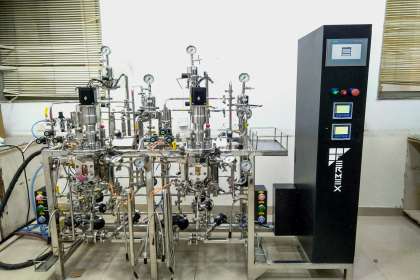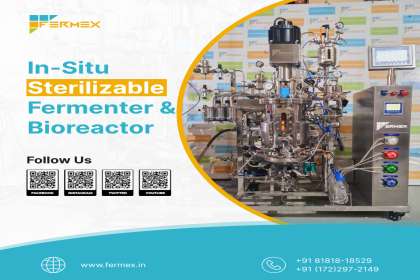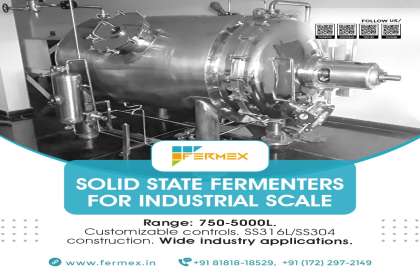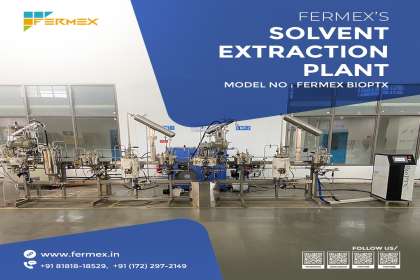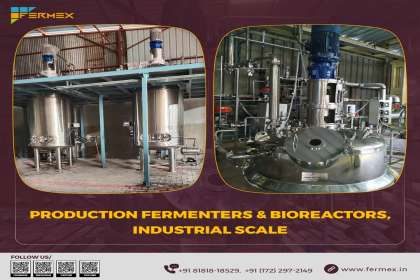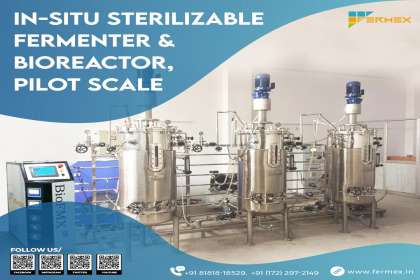Optimizing Primary Metabolites Production

Use of Fermenter in Primary Metabolites Production
Fermenters and bioreactors, play a crucial role in the production of primary metabolites through fermentation processes. Primary metabolites are essential compounds produced by living organisms as part of their normal growth and metabolic activities. They include compounds like amino acids, organic acids, alcohols, and vitamins, which are used in various industries such as food and beverage, pharmaceuticals, and biofuels.
- Fermenters provide a controlled and efficient platform for the production of primary metabolites at an industrial scale. By optimizing growth conditions, nutrient availability, and process parameters, fermenters contribute to higher yields, improved product quality, and cost-effective production of these valuable compounds.
Key stages involved in process of making Primary Metabolites using Fermenters
The process of making primary metabolites using a fermenter involves several key stages. Here are the typical steps involved:
1. Strain Selection: The first stage is to select a suitable microorganism strain capable of producing the desired primary metabolite. This involves screening different strains and selecting the one with the highest productivity, yield, and stability.
2. Inoculum Preparation: In this stage, a small-scale culture of the selected microorganism is prepared to serve as the inoculum. The inoculum is grown in a smaller fermenter or flask under controlled conditions, allowing the microorganism to multiply and reach a high cell density.
3. Seed Culture Transfer: Once the inoculum reaches the desired cell density, it is transferred to a larger fermenter to serve as the seed culture. The seed culture provides a large quantity of actively growing cells that will be used to inoculate the production fermenter.
4. Fermentation Medium Preparation: The fermentation medium is prepared, which consists of a carefully formulated mixture of nutrients required for the growth and metabolism of the microorganism. The medium typically includes carbon sources (such as sugars), nitrogen sources (such as ammonium salts), vitamins, minerals, and other essential components.
5. Sterilization: The fermentation medium and the production fermenter are sterilized to eliminate any potential contaminants. This is typically done through heat sterilization (autoclaving) or filtration methods to ensure a sterile environment for the microorganism.
6. Inoculation: The seed culture from the previous stage is inoculated into the production fermenter containing the sterilized fermentation medium. This introduces a high concentration of active cells into the fermenter, initiating the fermentation process.
7. Fermentation Process: The fermentation process takes place in the production fermenter under controlled conditions. The fermenter provides optimal parameters such as temperature, pH, oxygen levels, and agitation to support the growth and metabolism of the microorganism. The microorganism consumes the nutrients in the fermentation medium and produces the primary metabolite as a by-product of its metabolic activities.
8. Monitoring and Control: Throughout the fermentation process, various parameters are monitored using sensors and monitoring systems. This includes measuring pH, temperature, dissolved oxygen, nutrient concentrations, and metabolite levels. The data obtained is used to adjust and optimize the process parameters, ensuring maximum productivity and quality of the primary metabolite.
9. Harvesting: Once the fermentation process is complete, the primary metabolite is harvested from the fermentation broth. This may involve separation techniques such as filtration, centrifugation, or other methods depending on the nature of the metabolite and desired product purity.
10. Downstream Processing: The harvested primary metabolite may undergo further downstream processing steps to purify and concentrate the product. This can include techniques such as chromatography, crystallization, distillation, or drying, depending on the specific requirements of the metabolite.
11. Formulation and Packaging: The purified primary metabolite is then formulated into the desired final product form, which could be a liquid, powder, or other appropriate forms. The product is packaged under appropriate conditions to ensure stability and maintain its quality.


Fermex Solutions LLP manufacturer fermenters that can be used for these productions.
- Glass Autoclavable Fermenter (Lab scale)
- In situ Submerged Fermenter (Industrial scale)
- In situ Submerged Fermenter (Pilot scale)
- In situ Solid State Fermenter (Industrial scale)
- In situ Submerged Fermenter (Pilot scale)
Benefits of Fermenters in the production of Biofertilizer
Benefits of Fermenters in the Production of Primary Metabolites
1. Controlled Environment: Fermenters provide a controlled and optimized environment for microbial growth and metabolite production. Parameters such as temperature, pH, oxygen levels, and nutrient availability can be carefully monitored and adjusted, ensuring optimal conditions for the microorganisms. This control leads to higher yields and improved product quality.
2. Scalability: Fermenters allow for the production of primary metabolites at various scales, ranging from small laboratory-scale fermenters to large industrial-scale systems. This scalability enables the efficient transition from research and development to commercial production, ensuring consistent and reliable manufacturing processes.
3. High Productivity: Fermenters enable high-density cultivation of microorganisms, resulting in increased productivity of primary metabolites. The controlled environment, efficient nutrient supply, and optimized growth conditions provided by fermenters promote the rapid growth and metabolic activities of the microorganisms, leading to higher metabolite yields.
4. Cost-Effectiveness: Fermenters offer cost-effective production processes for primary metabolites. By providing optimal conditions for growth and metabolite production, fermenters maximize the efficiency of the fermentation process, reducing production costs per unit of metabolite. Additionally, fermenters allow for better utilization of resources, including nutrients and energy, contributing to cost savings.
5. Consistency and Quality Control: Fermenters provide a reproducible and consistent production environment, ensuring batch-to-batch consistency and quality control of primary metabolites. By maintaining precise control over critical parameters, fermenters minimize process variations and the risk of contamination, resulting in reliable and high-quality product outputs.
6. Flexibility: Fermenters offer flexibility in terms of the types of microorganisms that can be cultivated and the range of primary metabolites that can be produced. Different strains of microorganisms can be easily accommodated in fermenters, allowing for the production of a wide variety of primary metabolites to meet specific market demands.
7. Process Monitoring and Control: Fermenters are equipped with monitoring and control systems that enable real-time tracking of important process parameters. This data facilitates process optimization, allowing for adjustments to be made during the fermentation process to maximize primary metabolite production. Automated control systems can maintain optimal conditions and respond to deviations, ensuring efficient and robust production processes.
8. Time Efficiency: Fermenters enable accelerated production timelines for primary metabolites compared to traditional methods. The controlled environment and optimized growth conditions in fermenters promote faster microbial growth and metabolite production, reducing the overall fermentation time required.









